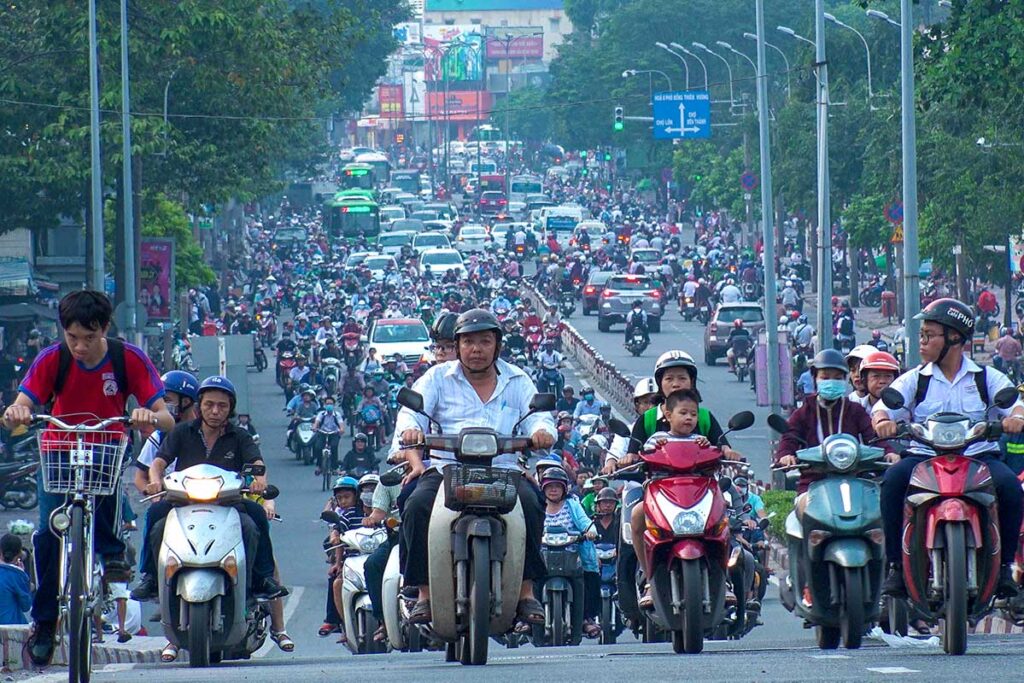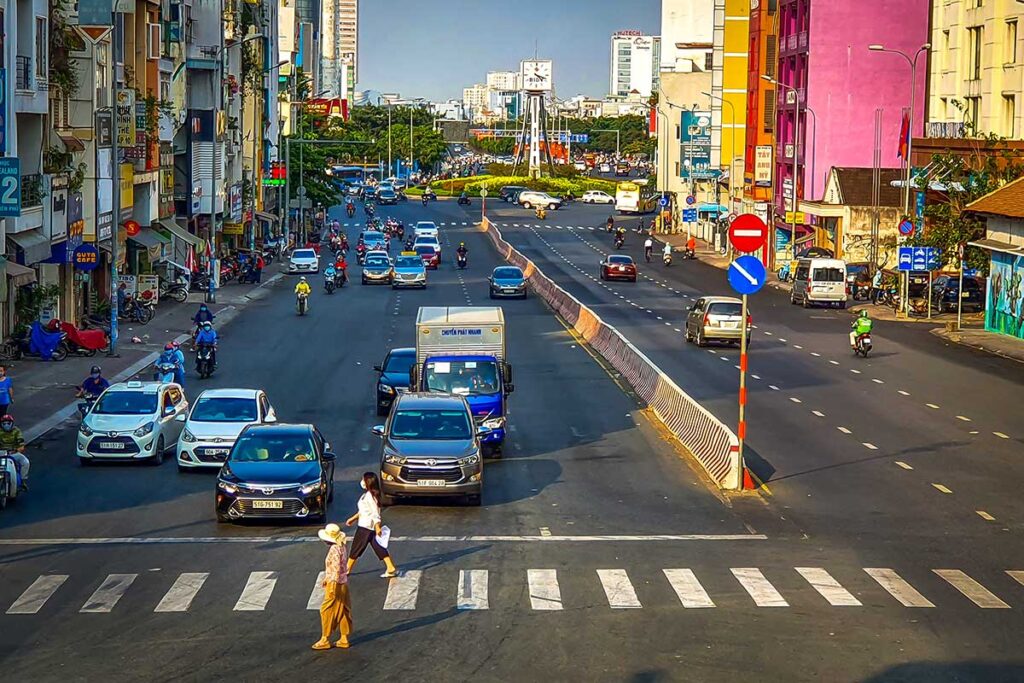Crossing the road in Vietnam can be an exhilarating, albeit intimidating, experience. The chaotic symphony of honking horns, weaving motorbikes, and seemingly endless streams of traffic can leave even the most seasoned traveler feeling overwhelmed. But fear not, with a few simple tips, you’ll be navigating Vietnam’s streets like a pro in no time.
Traffic in Vietnam: Organized chaos

The traffic in Vietnam’s cities, especially Hanoi and Ho Chi Minh City, is notorious for its intensity. Motorbikes reign supreme, zipping through narrow streets and seemingly defying all rules of the road. However, there’s a method to this madness. Beneath the apparent chaos lies an unspoken understanding between drivers and pedestrians. Unlike in many Western countries, traffic rules in Vietnam are more flexible and often dictated by the flow rather than strict regulations. Mastering this art of crossing the road is key to a smooth and safe journey.
Navigating as a pedestrian
Walking around cities and towns in Vietnam can be an adventure in itself. Sidewalks, while present, are often uneven, obstructed by street vendors, or used for motorbike parking.

This forces pedestrians to share the road with the constant flow of traffic. However, don’t let this deter you from exploring. With a little awareness and the right strategy, you’ll be able to navigate the streets with confidence.
Tips for Crossing the Road in Vietnam Like a Local
1. Use traffic lights and pedestrian crossings

Whenever possible, cross the road at traffic lights and pedestrian crossings. These spots are your safest bet, but still exercise caution. Be aware that some drivers might ignore traffic lights, and turning vehicles may still have a green light, so always check for oncoming traffic before stepping out.
2. Don’t expect vehicles to stop

Even at pedestrian crossings, vehicles might not stop for you. In Vietnam, the culture expects pedestrians to navigate around moving traffic. Drivers might not stop, and it can be dangerous if they do, as other drivers may not anticipate a sudden stop. Always be vigilant and assume that vehicles will keep moving.
3. Walk at a steady, predictable pace (Never run!)
When crossing the road in Vietnam, walk at a consistent, steady pace. This allows drivers to anticipate your movements and adjust their path accordingly. Running or making sudden movements can confuse drivers and increase the risk of accidents. Keep your pace slow and predictable.
4. Make yourself visible

Visibility is key when crossing the road. Raise your arm or hold out an object to make yourself more noticeable to drivers. Wear bright or reflective clothing at night or during busy traffic times. The more visible you are, the easier it is for drivers to see and avoid you.
5. Make eye contact with drivers
Before crossing, try to make eye contact with drivers, especially those on motorbikes or in cars closest to you. This ensures that they have seen you and are likely to slow down or adjust their path. Eye contact helps establish a non-verbal agreement that you are crossing and they need to be aware of your presence.
6. Wait for buses and trucks
If you see a bus or truck approaching, it’s best to wait until they pass before crossing the road. These large vehicles can block the view of other drivers, making it difficult for them to see you. If a motorbike is following closely behind a bus, the rider might not notice you until it’s too late. Waiting ensures you have a clear path and are visible to all drivers.
Alternatives for walking
1. Cyclo rides

Cyclos are three-wheeled bicycle taxis that offer a leisurely way to explore the city without the stress of crossing busy roads. They are particularly popular in tourist areas and provide a unique perspective of the city streets.
2. Electric buggies
In cities like Hanoi and Hoi An, electric buggies are available for short tours. These eco-friendly vehicles can navigate narrow streets and offer a comfortable way to see the sights without the hassle of walking through crowded areas.
3. Motorbike taxis (Xe Om)
Motorbike taxis, known as “xe om,” are a convenient and quick way to get around. You can find them on street corners or book them via apps like Grab. Although they require riding on a motorbike, they eliminate the need to constantly cross the road in Vietnam.
4. Car taxis
Traditional car taxis are readily available in most cities and can be hailed on the street or booked through apps like Grab. They offer a safe and air-conditioned way to travel longer distances within the city, avoiding the need to navigate traffic on foot.








